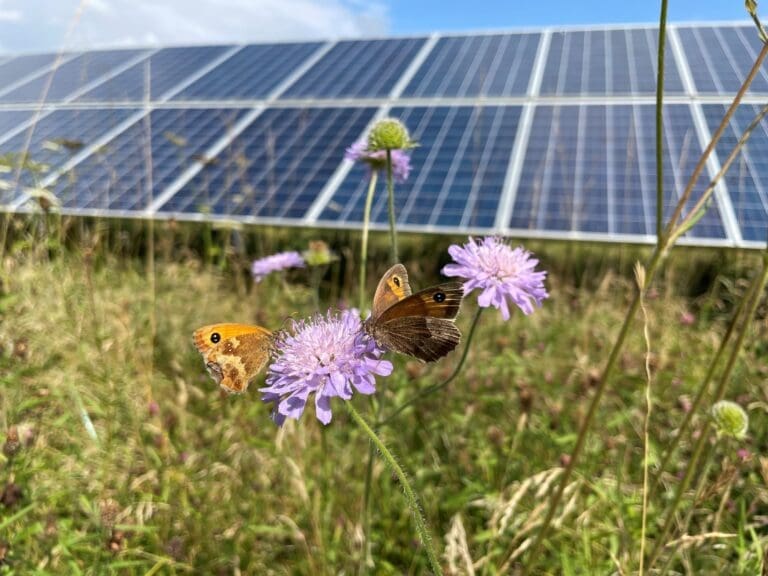
The findings are part of an ongoing collaboration between Solar Energy UK, Lancaster University and ecological consultancies Clarkson & Woods and Wychwood Biodiversity, which seeks to develop a standardised approach to biodiversity monitoring on UK solar farms.
The 2024 report builds on the first survey, in which 37 sites were meticulously monitored, by using data collected from 87 sites surveyed in 2023.
A variety of wildlife was observed, including vulnerable and red-listed species.
Skylarks and hares are among the most commonly observed wildlife on the farms. A total of 279 individual skylarks were seen despite the species being red-listed due to dramatic population declines in recent years.
Other red-listed bird species witnessed included yellowhammer, linnet and starling, spotted flycatcher, corn bunting and nightingale.
The brown hare, also a species of conservation concern, made up 40 per cent of mammal sightings. Other mammals recorded included badgers, foxes, rabbits, weasels, common shrews, field voles and three types of deer.
These findings are most likely an underestimate, as field surveys were performed at times when they are less likely to be active.
The small heath butterfly, a species of principal importance for biodiversity conservation that has fallen in number across the UK, was found at ten sites. Other scarce species included the amber-listed Dartford warbler and the red-listed tree pipit, with the legally-protected common rosefinch – a rare visitor to the UK – also making a surprise appearance.
The number of plant species found was significantly greater on sites managed specifically with biodiversity in mind.
In addition, the more diverse plant species that were found, the more invertebrate species there were. This invertebrate diversity in turn has a positive relationship with bird species.
‘Vital role in nature recovery’
Overall, the report asserts that efforts to promote biodiversity are paying off and that solar farms can become havens for biodiversity, playing an important role in nature restoration across the country.
Chris Hewett, Chief Executive of Solar Energy UK, said: “We are delighted to see yet more data demonstrating the vital role that solar farms are playing in nature recovery. Solar Energy UK is committed to working with the industry to build this evidence base year on year.”
The full report of the findings – Solar Habitat 2024: Ecological Trends on Solar Farms in the UK – also references a separate study of 10 solar farms which found that measures such as building ponds, planting trees and enhancing existing hedges, could increase biodiversity by eight to 110% using the Government’s Biodiversity Net Gain (BNG) framework.
Under the new framework, major developments must deliver an increase in biodiversity of at least 10 per cent, either on site, off-site, or through the purchase of biodiversity credits.
‘Understanding is growing’
Hollie Blaydes, PhD Researcher at Lancaster Environment Centre, Lancaster University, said: “Our understanding of biodiversity at solar farms is growing as more ecological monitoring data are collected across an increasing number of UK solar farms. Groups such as birds and invertebrates appear to respond positively to biodiversity-focused management at solar farms and we hope to continue working with the data to further unpick the patterns identified.”
Although the sites monitored represents only six per cent of the UK’s 1,400 solar farms, it provides a vital glimpse into the broader ecological landscape with more sites expected to be monitored in the future.
Image credit: Hollie Blaydes